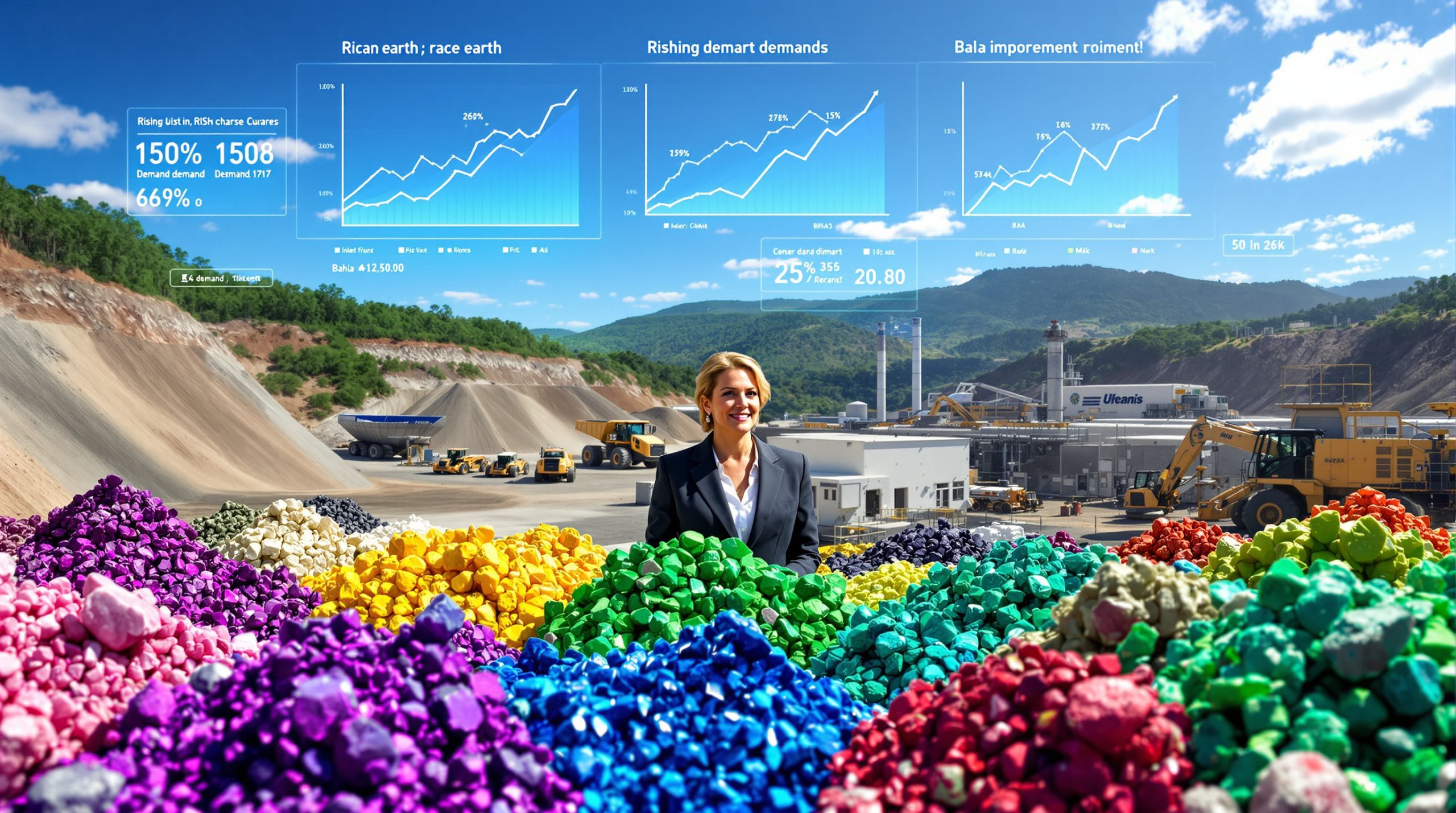What is the Resolution Copper Project?
Overview of the Joint Venture
The Resolution Copper Project represents a significant mining endeavor established as a joint venture between two global mining giants: Rio Tinto (holding a 55% stake) and BHP (holding a 45% stake). Located near Superior, Arizona, this ambitious project targets one of North America's largest undeveloped copper deposits. The strategic importance of this venture cannot be overstated, as it has the potential to supply approximately 25% of United States copper demand upon reaching full operational capacity.
The deposit itself contains an estimated 1.7 billion metric tons of resources averaging 1.52% copper grade, making it one of the highest-grade large-scale copper projects globally. Geologists classify it as a porphyry copper deposit formed over 60 million years ago, with mineralization occurring at depths between 5,000-7,000 feet below the surface—substantially deeper than most North American copper mines.
Project Scale and Economic Impact
When fully operational, the Resolution Copper Project is projected to produce approximately 120,000 tons of copper concentrate annually, translating to roughly 40 billion pounds of copper over its expected 40-year lifespan. This enormous production capacity would position it as the largest copper mine in North America and among the top five globally.
The economic footprint of the project extends far beyond mineral extraction. Economic impact studies indicate that the Resolution Copper Project would contribute approximately $61 billion to Arizona's economy over its operational life, including $20 billion in tax revenue. During the peak construction phase, the project is expected to generate approximately 3,700 direct jobs, with around 1,500 permanent positions created for long-term operations.
Infrastructure investments associated with the project are substantial, with Rio Tinto and BHP committing over $2 billion for water management systems, power infrastructure, and transportation networks that would benefit the broader community. The project would also stimulate secondary employment, with an estimated multiplier effect creating 2.5 additional jobs for each direct position.
Why Has the Resolution Copper Project Been Delayed?
Legal Challenges Over Indigenous Sacred Land
The Resolution Copper Project has faced significant legal obstacles, primarily centered on the status of Oak Flat, a 2,422-acre parcel of land considered sacred by Western Apache tribes, particularly the San Carlos Apache. This location, known as "Chi'chil Biłdagoteel" in Apache, has been used for centuries for religious ceremonies and cultural practices.
The controversy stems from a land exchange provision included in the 2014 National Defense Authorization Act, which mandated the transfer of Oak Flat from federal ownership to Resolution Copper regardless of environmental review outcomes. This legislative approach bypassed traditional consultation processes required under Section 106 of the National Historic Preservation Act.
The Supreme Court is scheduled to hear arguments in Apache Stronghold v. United States in June 2025, focusing on whether the land transfer violates the Religious Freedom Restoration Act. Previous rulings have been mixed, with the Ninth Circuit Court of Appeals issuing a split decision that allowed the transfer to proceed while acknowledging the religious significance of the site.
Regulatory and Environmental Hurdles
Beyond the indigenous rights issues, the Resolution Copper Project has encountered numerous regulatory challenges. The permitting process, initially expected to conclude by 2020, has stretched well beyond projected timelines due to changing political administrations and environmental concerns.
The Environmental Impact Statement process has identified several significant ecological challenges, including potential impacts on the desert ecosystem and water resources. Hydrological studies suggest the project could affect groundwater levels in a region already facing water scarcity, with models predicting drawdown effects extending up to 6 miles from the mining operation.
Public opposition has been substantial, with environmental groups citing concerns about water usage estimated at 250 million gallons annually in a drought-prone region. Additionally, the mine's planned block-cave mining technique will eventually create a subsidence zone approximately 2 miles wide and 1,000 feet deep, permanently altering the landscape.
How Might Trump's Policies Impact the Project?
Emergency Powers and Permit Fast-Tracking
Former President Trump's approach to critical minerals development could significantly accelerate the Resolution Copper Project if implemented. Trump previously designated copper as a critical mineral under Executive Order 13817, which directed federal agencies to reduce permitting timelines for strategic resource development.
The potential use of emergency powers under the Defense Production Act could create a regulatory fast-track for Resolution Copper, potentially reducing the typical 7-10 year permitting timeline to 18-24 months. This approach would invoke national security provisions to override standard environmental review processes and tribal consultation requirements.
Industry analysts note that Trump's policy impact on the mining sector was significant during his previous administration, when he implemented the "One Federal Decision" policy, which streamlined environmental reviews by imposing a 2-year maximum timeline and establishing a single lead agency. If reinstated, this mechanism could resolve the current regulatory gridlock facing Resolution Copper by centralizing decision-making authority within the Department of Interior.
Copper as a Strategic Resource
The classification of copper as a strategic resource stems from its critical importance to both defense applications and the clean energy transition. The Defense Logistics Agency has identified copper as essential for military hardware, with each F-35 fighter jet containing approximately 9,000 pounds of copper.
Copper's strategic value extends beyond defense to energy security. Each electric vehicle requires approximately 183 pounds of copper—nearly four times the amount in conventional vehicles. Similarly, renewable energy infrastructure is copper-intensive, with utility-scale solar installations using approximately 5.5 tons per megawatt and offshore wind farms requiring up to 15 tons per megawatt.
U.S. reliance on imported copper creates strategic vulnerabilities, with current domestic production meeting only 25% of demand. Chile and Peru account for approximately 38% of global copper production, while China controls roughly 40% of refining capacity—raising concerns about supply chain security. Resolution Copper could reduce this dependency significantly, potentially decreasing copper imports by 25% within its first decade of operation.
What is Rio Tinto's Approach to Indigenous Relations?
Ongoing Dialogue with Native American Communities
Rio Tinto maintains that it has established comprehensive engagement protocols with affected tribes, conducting over 500 consultation meetings with tribal representatives since 2004. The company has established a $15 million Native American Tribal Heritage Fund aimed at cultural preservation initiatives and educational opportunities for tribal members.
Despite these efforts, fundamental disagreements persist regarding the adequacy of consultation. Rio Tinto's approach focuses on mitigation and compensation rather than obtaining consent, offering impact benefit agreements valued at approximately $65 million over the project's lifetime to affected communities.
The company's cultural heritage management plan includes provisions for tribal monitors during construction and documenting sacred sites through 3D imaging. However, tribal representatives argue these measures cannot adequately protect or replace sites that would be permanently destroyed by mining operations.
Commitment to UN Indigenous Consent Standards
Rio Tinto publicly endorses the United Nations Declaration on the Rights of Indigenous Peoples (UNDRIP) principles of Free, Prior and Informed Consent (FPIC). This commitment gained particular significance following the company's destruction of the 46,000-year-old Juukan Gorge caves in Australia in 2020, which led to significant corporate governance reforms.
However, implementation of these standards remains contentious in the Resolution Copper context. Legal experts note a fundamental disconnect between FPIC principles, which establish consent as a prerequisite for development, and the legislative land exchange mechanism, which mandates the transfer regardless of tribal objections.
Indigenous rights advocates highlight that while Rio Tinto's copper strategy has improved its consultation processes, the company has stopped short of acknowledging tribal authority to reject the project entirely—a position that falls short of full FPIC implementation according to UN interpretative guidelines.
How Does Resolution Copper Fit into Global Copper Market Trends?
Supply-Demand Dynamics
The global copper market outlook faces a projected supply deficit of 6-8 million metric tons annually by 2032, driven primarily by electrification trends. Electric vehicle production alone is expected to require an additional 3.5 million tons of copper annually by 2030, while grid infrastructure upgrades will demand approximately 2 million additional tons.
Copper grades at existing mines are declining globally, with average ore grades falling from 1.05% to 0.82% over the past decade. This trend makes Resolution's above-average grade of 1.52% particularly valuable from a market perspective, as it could produce more metal with less energy and environmental impact per ton processed.
Financial analysts forecast copper price dynamics to maintain an upward trajectory, potentially reaching $12,000-15,000 per metric ton by 2028 as supply constraints intensify. At these price levels, the Resolution project's economics become increasingly attractive, with projected production costs in the lowest quartile globally at approximately $2,800 per ton.
Rio Tinto's Global Copper Strategy
Resolution Copper represents a cornerstone of Rio Tinto's broader strategy to increase its copper portfolio exposure. The company has identified copper as a priority growth commodity, with plans to expand production from 500,000 tons annually to over 1 million tons by 2030.
Beyond Resolution, Rio Tinto's copper portfolio includes the Kennecott mine in Utah, Oyu Tolgoi in Mongolia, and Escondida in Chile (through a joint venture). These assets position the company across multiple geopolitical jurisdictions, reducing country-specific risks through geographical diversification.
Rio Tinto's $3.7 billion investment in the Winu copper-gold project in Western Australia's Paterson Province demonstrates the company's commitment to expanding its copper footprint. Simultaneously, the company is pursuing technological innovations in copper extraction, investing $25 million in leaching technologies that could make previously uneconomic deposits viable.
What Are the Environmental Considerations?
Water Usage and Management
Water management represents one of the most significant environmental challenges for the Resolution Copper Project. The operation is projected to require approximately 250 million gallons of water annually in a region already experiencing severe drought conditions.
To address these concerns, Rio Tinto has proposed a comprehensive water management system including a $300 million desalination plant on the Gulf of California to provide alternative water sources. The plan includes a 190-mile pipeline to transport treated seawater to the mining operation, reducing impacts on local aquifers.
The company has also committed to implementing advanced water recycling technology that could achieve up to 85% water reuse across mining operations. This includes utilizing thickened tailings disposal methods that recover significantly more water than conventional tailings facilities and reduce evaporative losses.
Land Reclamation and Biodiversity Protection
The project's reclamation plan incorporates progressive restoration techniques, with concurrent rehabilitation activities planned throughout the mine's operational life rather than exclusively at closure. This approach aims to minimize the duration of disturbed areas and accelerate ecosystem recovery.
Biodiversity offset programs include the preservation of 4,500 acres of environmentally comparable land for each acre disturbed by mining operations. These protected areas focus on maintaining habitat for sensitive species, including the endangered Arizona hedgehog cactus and southwest willow flycatcher.
Rio Tinto has established an environmental monitoring program utilizing over 30 groundwater monitoring wells and continuous air quality sampling stations. This data will be made publicly available through an online portal, allowing independent verification of environmental compliance throughout the project's lifecycle.
What Economic Benefits Could Resolution Copper Deliver?
Job Creation and Skills Development
The Resolution Copper Project promises significant employment opportunities, with economic models projecting 3,700 direct construction jobs and 1,500 permanent operational positions. Analysis of the required workforce indicates approximately 35% of these positions would be in skilled trades with median salaries exceeding $85,000 annually.
The project includes provisions for workforce development initiatives, including partnerships with Arizona community colleges to develop specialized mining technology programs. Rio Tinto has pledged $10 million toward establishing an advanced mining training center in Superior, Arizona, focused on automated mining systems and digital operations.
Diversity and inclusion targets aim to ensure the project's economic benefits extend to historically underrepresented groups. The company has established a goal of 15% Native American employment across all project phases and 30% female participation in traditionally male-dominated mining roles.
Tax Revenue and Community Investment
Tax contribution models indicate the Resolution Copper Project would generate approximately $20 billion in tax revenue over its operational life, divided among federal, state, and local governments. Local communities would receive approximately $25 million annually in property taxes once the mine reaches full production.
Community development agreements include establishing a $50 million legacy fund managed by a community foundation to support sustainable development initiatives beyond mining operations. This approach aims to avoid the "boom-and-bust" cycle typically associated with resource-dependent communities.
Infrastructure improvements funded by the project include upgrading 52 miles of regional highways, expanding water treatment facilities, and developing renewable energy installations to offset the mine's carbon footprint. These investments would provide long-term benefits to nearby communities independent of mining operations.
FAQ About the Resolution Copper Project
What is the estimated timeline for the Resolution Copper Project?
The current project status remains in the permitting phase, with Resolution Copper having invested over $2 billion in preliminary development work, including the sinking of a 7,000-foot exploration shaft. The critical path forward depends on legal outcomes, particularly the Supreme Court's decision regarding tribal religious freedom claims.
If permits are approved by 2026, construction would likely begin in 2027 with a 6-8 year development timeline before initial production. Full operational capacity would be reached approximately 3 years after first production, with the mine operating at peak output around 2038-2039.
Factors that could accelerate this timeline include federal designation as a strategic project under national security provisions or specific congressional action to resolve legal challenges. Conversely, continued legal opposition or changing environmental regulations could extend the timeline indefinitely.
How will the mining operation affect local communities?
The project's proximity to Superior, Arizona (population 2,800) means community impacts will be substantial. Traffic assessments project an increase of approximately 800 vehicle movements daily during peak construction, requiring significant road infrastructure upgrades.
Noise modeling indicates mining operations would increase ambient sound levels by 6-10 decibels in some residential areas, though engineering controls including sound barriers and equipment insulation would maintain levels below EPA guidelines of 55 decibels for residential areas.
Community health assessments have identified dust management as a priority concern, with the company committing to implement real-time air quality monitoring systems and automated dust suppression technologies. These systems would trigger operational modifications when air quality parameters approach regulatory thresholds.
What mining methods will be used at Resolution Copper?
Resolution Copper plans to employ block cave mining, an advanced underground technique particularly suited to the deep, large-scale nature of the deposit. This method involves undercutting the ore body and allowing it to progressively collapse under its own weight, creating a controlled cave-in that brings ore to collection points.
Block caving represents a significant technological advancement over traditional open-pit mining, reducing surface disturbance by approximately 87% compared to equivalent open-pit operations. However, it does create a surface subsidence zone as underground voids migrate upward over time.
The operation will incorporate autonomous mining equipment, including remotely operated load-haul-dump machines and robotic drilling systems. These technologies improve worker safety by removing personnel from high-risk underground environments while increasing operational efficiency through 24/7 production capabilities.
Conclusion: The Future of Resolution Copper
Key Determining Factors
The Supreme Court's forthcoming decision will fundamentally shape Resolution Copper's future, establishing precedent regarding the balance between religious freedom protections and national resource development priorities. Legal experts anticipate the ruling will provide guidance on the applicability of Religious Freedom Restoration Act protections to public lands with cultural significance.
The regulatory environment under changing presidential administrations creates substantial uncertainty. Historical precedent demonstrates that mining policies can shift dramatically between administrations, with permitting timelines potentially varying by 5+ years depending on executive priorities regarding resource development.
Copper market conditions will influence development urgency, with current price projections supporting investment but volatility potentially affecting project economics. The project's breakeven price is estimated at approximately $6,800 per ton, providing substantial margin against current prices exceeding $9,000 per ton.
Strategic Importance in US Mineral Security
Resolution Copper represents a cornerstone of potential U.S. mineral independence, with the capacity to reduce import reliance on copper from 75% to approximately 50% at full production. This reduction would significantly strengthen supply chain resilience for critical infrastructure and defense applications.
The project's contribution to clean energy transition cannot be overstated, as copper remains essential for renewable energy technologies. Each gigawatt of solar capacity requires approximately 3 million pounds of copper, while grid modernization demands approximately 5,500 pounds per mile of high-voltage transmission line.
National security implications extend beyond direct defense applications to technology competition with China, particularly in semiconductor manufacturing and advanced computing. These industries require high-purity copper, with domestic sources offering greater supply certainty and reduced vulnerability to potential trade restrictions.
Are You Tracking the Next Major Mineral Discovery?
Stay ahead of the market with Discovery Alert's proprietary Discovery IQ model, which delivers instant notifications on significant ASX mineral discoveries and transforms complex data into actionable investment insights. Explore why major discoveries like Resolution Copper can generate substantial returns by visiting the Discovery Alert discoveries page and begin your 30-day free trial today.




